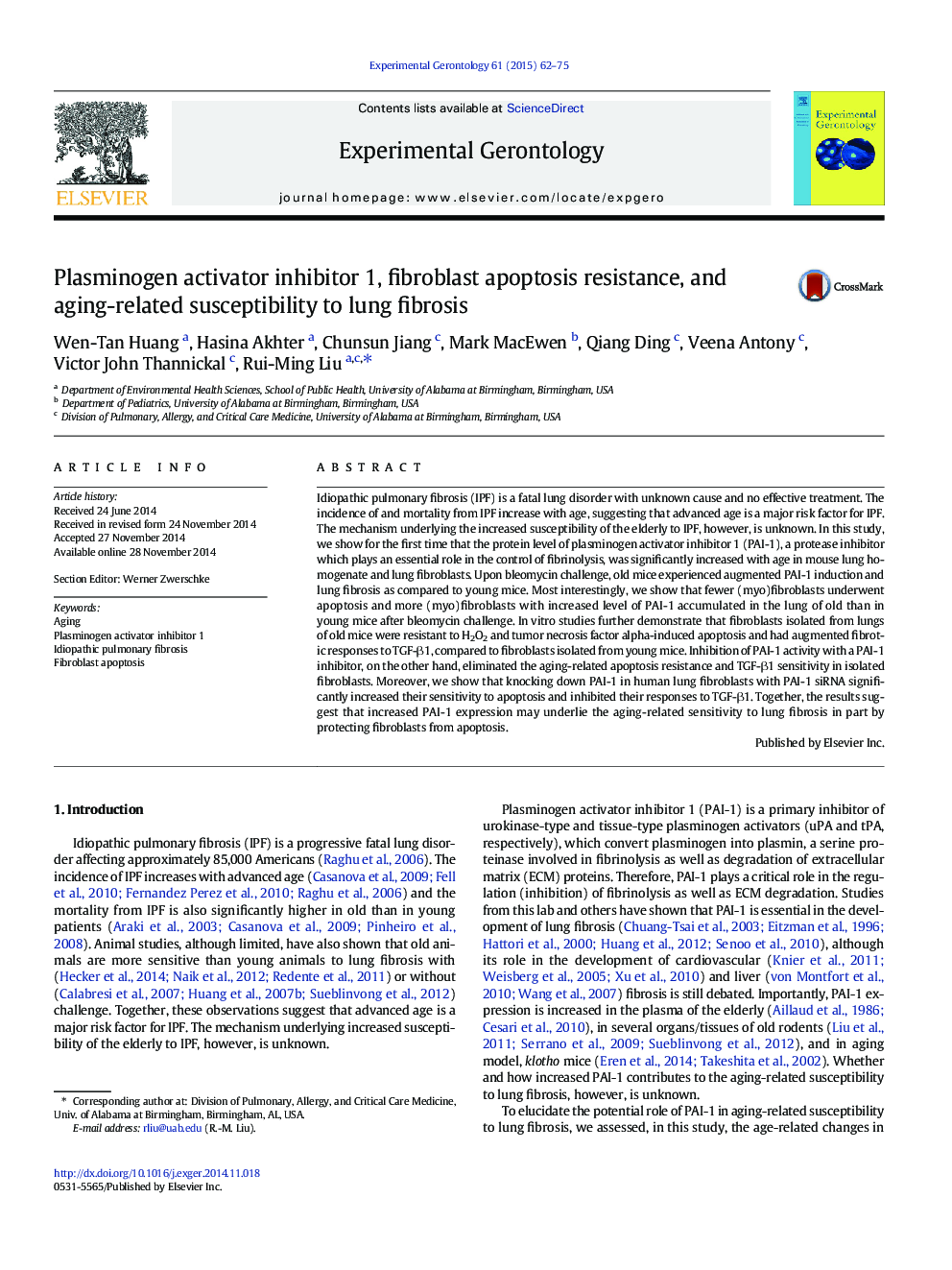| Article ID | Journal | Published Year | Pages | File Type |
|---|---|---|---|---|
| 1906210 | Experimental Gerontology | 2015 | 14 Pages |
•First to show that PAI-1 protein level is increased with age in mouse lung tissue and lung fibroblasts.•First to show that apoptosis resistance of lung fibroblasts is associated with increased PAI-1 both in vivo and in vitro.•Old mice experienced augmented PAI-1 induction and lung fibrosis, compared to young mice, upon bleomycin challenge.•Inhibition of PAI-1 activity eliminated the aging-related apoptosis resistance and TGF-β1 sensitivity in isolated fibroblasts.•Knockdown of PAI-1 with PAI-1 siRNA increased apoptosis sensitivity and suppressed TGF-β1 response in human lung fibroblasts.
Idiopathic pulmonary fibrosis (IPF) is a fatal lung disorder with unknown cause and no effective treatment. The incidence of and mortality from IPF increase with age, suggesting that advanced age is a major risk factor for IPF. The mechanism underlying the increased susceptibility of the elderly to IPF, however, is unknown. In this study, we show for the first time that the protein level of plasminogen activator inhibitor 1 (PAI-1), a protease inhibitor which plays an essential role in the control of fibrinolysis, was significantly increased with age in mouse lung homogenate and lung fibroblasts. Upon bleomycin challenge, old mice experienced augmented PAI-1 induction and lung fibrosis as compared to young mice. Most interestingly, we show that fewer (myo)fibroblasts underwent apoptosis and more (myo)fibroblasts with increased level of PAI-1 accumulated in the lung of old than in young mice after bleomycin challenge. In vitro studies further demonstrate that fibroblasts isolated from lungs of old mice were resistant to H2O2 and tumor necrosis factor alpha-induced apoptosis and had augmented fibrotic responses to TGF-β1, compared to fibroblasts isolated from young mice. Inhibition of PAI-1 activity with a PAI-1 inhibitor, on the other hand, eliminated the aging-related apoptosis resistance and TGF-β1 sensitivity in isolated fibroblasts. Moreover, we show that knocking down PAI-1 in human lung fibroblasts with PAI-1 siRNA significantly increased their sensitivity to apoptosis and inhibited their responses to TGF-β1. Together, the results suggest that increased PAI-1 expression may underlie the aging-related sensitivity to lung fibrosis in part by protecting fibroblasts from apoptosis.
